#Microsoft Graph SDK
Explore tagged Tumblr posts
Text
Middle East and Africa Quantum Computing Market Size, Share, Trends, Key Drivers, Growth Opportunities and Competitive Outlook
Middle East and Africa Quantum Computing Market - Size, Share, Demand, Industry Trends and Opportunities
Middle East and Africa Quantum Computing Market, By System (Single Qubit Quantum System, Multiple Qubit System), Qubits (Trapped Ion Qubits, Semiconductor Qubits and Super Conducting), Offering (Systems, Services), Deployment Model (On-Premises, Cloud), Component (Hardware, Software and Services), Application (Cryptography, Simulation, Parallelism, Machine Learning, Algorithms, Others), Logic Gates (Toffoli Gate, Hadamard Gate, Pauli Logic Gates and Others), Verticals (Banking And Finance, Healthcare and Pharmaceuticals, Defense, Automotive, Chemical, Utilities, Others), Country (South Africa, U.A.E, Israel, Egypt, Saudi Arabia and Rest of Middle East and Africa) Industry Trends.
Get the PDF Sample Copy (Including FULL TOC, Graphs and Tables) of this report @
**Segments**
The Middle East and Africa quantum computing market is expected to witness significant growth over the forecast period. The market can be segmented based on components, applications, and end-users. In terms of components, the market can be divided into hardware, software, and services. Hardware components include quantum processors, quantum memory, and quantum gates, among others. Software components encompass quantum algorithms and quantum software development kits (SDKs). Services segment consists of consulting, training, and maintenance services related to quantum computing technologies.
Moving on to applications, the Middle East and Africa quantum computing market can be categorized into cybersecurity, optimization, machine learning, simulation, and others. Quantum computing is increasingly being utilized in cybersecurity to enhance encryption techniques and secure sensitive data. Optimization applications include supply chain management, logistics, and financial portfolio optimization. Machine learning is another key application area where quantum computing can significantly improve complex algorithms and predictive modeling. Furthermore, simulation applications involve quantum simulations for material design, drug discovery, and weather forecasting, among others.
When considering end-users, the market can be segmented into healthcare, BFSI (Banking, Financial Services, and Insurance), aerospace and defense, energy and utilities, and others. The healthcare sector is exploring quantum computing for personalized medicine, genomics, and drug discovery applications. The BFSI industry is leveraging quantum computing for risk management, fraud detection, and algorithmic trading. Aerospace and defense companies are utilizing quantum computing for advanced simulations, cryptography, and satellite communications. Energy and utilities sector are adopting quantum computing for grid optimization, renewable energy integration, and predictive maintenance.
**Market Players**
- IBM Corporation - D-Wave Systems Inc. - Rigetti & Co, Inc. - Google LLC - Microsoft Corporation - Intel Corporation - Anyon Systems Inc. - QC Ware Corp - IonQ Inc.
The Middle East and Africa quantum computing market is witnessing increased investments in research and development activities, strategic partnerships, and collaborations among key market players. IBM Corporation, a prominent player in the quantum computing space, has been focusing on advancing quantum hardware and software capabilities. D-Wave Systems Inc., known for its quantum annealing technology, has been expanding its presence in the region through partnerships with local organizations. Rigetti & Co, Inc. has been making significant advancements in superconducting quantum processors, attracting attention from various industries. Google LLC and Microsoft Corporation are also actively involved in quantum computing research and development, driving innovation in the market.
Market players such as Intel Corporation, Anyon Systems Inc., QC Ware Corp, and IonQ Inc. are contributing to the growth of the Middle East and Africa quantum computing market through their technological expertise and product offerings. These companies are focusing on addressing the specific requirements of industries such as healthcare, BFSI, aerospace and defense, and energy and utilities. With the increasing demand for quantum computing solutions in the region, market players are expected to continue investing in expanding their product portfolios and enhancing their capabilities to cater to diverse end-user needs.
Overall, the Middle East and Africa quantum computing market presents significant growth opportunities driven by the increasing adoption of quantum technologies across various industries. The market players are playing a crucial role in driving innovation, developing advanced solutions, and expanding their market presence through strategic initiatives. As the market continues to evolve, collaborations, partnerships, and investments in research and development will be key factors influencing the competitive landscape and growth trajectory of the quantum computing market in the region.
Access Full 350 Pages PDF Report @
Key points covered in the report: -
The pivotal aspect considered in the Middle East and Africa Quantum Computing Market report consists of the major competitors functioning in the market.
The report includes profiles of companies with prominent positions in the market.
The sales, corporate strategies and technical capabilities of key manufacturers are also mentioned in the report.
The driving factors for the growth of the Middle East and Africa Quantum Computing Market are thoroughly explained along with in-depth descriptions of the industry end users.
The report also elucidates important application segments of the market to readers/users.
This report performs a SWOT analysis of the market. In the final section, the report recalls the sentiments and perspectives of industry-prepared and trained experts.
The experts also evaluate the export/import policies that might propel the growth of the Middle East and Africa Quantum Computing Market.
The Middle East and Africa Quantum Computing Market report provides valuable information for policymakers, investors, stakeholders, service providers, producers, suppliers, and organizations operating in the industry and looking to purchase this research document.
Reasons to Buy:
Review the scope of the Middle East and Africa Quantum Computing Market with recent trends and SWOT analysis.
Outline of market dynamics coupled with market growth effects in coming years.
Middle East and Africa Quantum Computing Market segmentation analysis includes qualitative and quantitative research, including the impact of economic and non-economic aspects.
Middle East and Africa Quantum Computing Market and supply forces that are affecting the growth of the market.
Market value data (millions of US dollars) and volume (millions of units) for each segment and sub-segment.
and strategies adopted by the players in the last five years.
Browse Trending Reports:
South America Biostimulants Market North America Non Ionic Surfactants Market Asia Pacific Sweet Potato Powder Market North America Sweet Potato Powder Market Europe Sweet Potato Powder Market Middle East And Africa Sweet Potato Powder Market India Non Stick Cookware Market Europe Reverse Logistics Market Asia Pacific Reverse Logistics Market North America Reverse Logistics Market Middle East And Africa Reverse Logistics Market
About Data Bridge Market Research:
Data Bridge set forth itself as an unconventional and neoteric Market research and consulting firm with unparalleled level of resilience and integrated approaches. We are determined to unearth the best market opportunities and foster efficient information for your business to thrive in the market. Data Bridge endeavors to provide appropriate solutions to the complex business challenges and initiates an effortless decision-making process.
Contact Us:
Data Bridge Market Research
US: +1 614 591 3140
UK: +44 845 154 9652
APAC : +653 1251 975
Email: [email protected]
0 notes
Text
Unlocking the Power of Microsoft 365 with Microsoft Graph API
In today’s cloud-driven world, businesses rely heavily on productivity tools like Microsoft 365. From Outlook and OneDrive to Teams and SharePoint, these services generate and manage a vast amount of data. But how do developers tap into this ecosystem to build intelligent, integrated solutions? Enter Microsoft Graph API — Microsoft’s unified API endpoint that enables you to access data across its suite of services.
What is Microsoft Graph API?

Microsoft Graph API is a RESTful web API that allows developers to interact with the data of millions of users in Microsoft 365. Whether it’s retrieving calendar events, accessing user profiles, sending emails, or managing documents in OneDrive, Graph API provides a single endpoint to connect it all.

Azure Active Directory
Outlook (Mail, Calendar, Contacts)
Teams
SharePoint
OneDrive
Excel
Planner
To Do
This unified approach simplifies authentication, query syntax, and data access across services.
Key Features
Single Authentication Flow: Using Microsoft Identity Platform, you can authenticate once and gain access to all services under Microsoft Graph.
Deep Integration with Microsoft 365: You can build apps that deeply integrate with the Office ecosystem — for example, a chatbot that reads Teams messages or a dashboard displaying user analytics.
Webhooks & Real-Time Data: Graph API supports webhooks, enabling apps to subscribe to changes in real time (e.g., receive notifications when a new file is uploaded to OneDrive).
Rich Data Access: Gain insights with advanced queries using OData protocol, including filtering, searching, and ordering data.
Extensible Schema: Microsoft Graph lets you extend directory schema for custom applications.
Common Use Cases

Custom Dashboards: Display user metrics like email traffic, document sharing activity, or meetings analytics.
Workplace Automation: Create workflows triggered by calendar events or file uploads.
Team Collaboration Apps: Enhance Microsoft Teams with bots or tabs that use Graph API to fetch user or channel data.
Security & Compliance: Monitor user sign-ins, audit logs, or suspicious activity.
Authentication & Permissions
To use Graph API, your application must be registered in Azure Active Directory. After registration, you can request scopes like User Read, Mail Read, or Files ReadWrite. Microsoft enforces strict permission models to ensure data privacy and control.
Getting Started
Register your app in Azure Portal.
Choose appropriate Microsoft Graph permissions.
Obtain OAuth 2.0 access token.
Call Graph API endpoints using HTTP or SDKs (available for .NET, JavaScript, Python, and more).
Learn More About Our Microsoft Graph API
Microsoft Graph API is a powerful tool that connects you to the heart of Microsoft 365. Whether you’re building enterprise dashboards, automation scripts, or intelligent assistants, Graph API opens the door to endless possibilities. With just a few lines of code, you can tap into the workflows of millions and bring innovation right into the productivity stack.
0 notes
Text
Utilize Azure AI Studio To Create Your Own Copilot

Microsoft Azure AI Studio
With Microsoft Azure AI Studio now broadly available, organisations may now construct their own AI copilots in the fast evolving field of AI technology. Organisations can design and create their own copilot using AI Studio to suit their specific requirements.
AI Studio speeds up the generative AI development process for all use cases, enabling businesses to leverage AI to create and influence the future.
An essential part of Microsoft’s copilot platform is Azure AI Studio. With Azure-grade security, privacy, and compliance, it is a pro-code platform that allows generative AI applications to be fully customised and configured. Utilising Azure AI services and tools, copilot creation is streamlined and accelerated with full control over infrastructure thanks to flexible and integrated visual and code-first tooling and pre-built quick-start templates.
With its simple setup, management, and API support, it eases the idea-to-production process and assists developers in addressing safety and quality concerns. The platform contains well-known Azure Machine Learning technology, such as prompt flow for guided experiences for speedy prototyping, and Azure AI services, such as Azure OpenAI Service and Azure AI Search. It is compatible with code-first SDKs and CLIs, and when demand increases, it can be scaled with the help of the AI Toolkit for Visual Studio Code and the Azure Developer (AZD) CLI.
AI Studios
Model Selection and API
Find the most appropriate AI models and services for your use case.
Developers can create intelligent multimodal, multilingual copilots with customisable models and APIs that include language, voice, content safety, and more, regardless of the use case.
More than 1600 models from vendors such as Meta, Mistral, Microsoft, and OpenAI are available with the model catalogue. These models include GPT 4 Turbo with Vision, Microsoft’s short language model (SLM) Phi3, and new models from Core42 and Nixtla. Soon to be released are models from NTT DATA, Bria AI, Gretel, Cohere Rerank, AI21, and Stability AI. The most popular models that have been packed and optimised for use on the Azure AI platform are those that Azure AI has curated. In addition, the Hugging Face collection offers a wide range of hundreds of models, enabling users to select the precise model that best suits their needs. And there are a tonne more options available!
With the model benchmark dashboard in Azure AI Studio, developers can assess how well different models perform on different industry-standard datasets and determine which ones work best. Using measures like accuracy, coherence, fluency, and GPT similarity, benchmarks evaluate models. Users are able to compare models side by side by seeing benchmark results in list and dashboard graph forms.
Models as a Platform (MaaP) and Models as a Service (MaaS) are the two model deployment options provided by the model catalogue. Whereas MaaP offers models deployed on dedicated virtual machines (VMs) and paid as VMs per-hour, MaaS offers pay-as-you-go per-token pricing.
Before integrating open models into the Azure AI collection, Azure AI Studio additionally checks them for security flaws and vulnerabilities. This ensures that model cards have validations, allowing developers to confidently deploy models.
Create a copilot to expedite the operations of call centers
With the help of AI Studio, Vodafone was able to update their customer care chatbot TOBi and create SuperAgent, a new copilot with a conversational AI search interface that would assist human agents in handling intricate customer queries.
In order to assist consumers, TOBi responds to frequently asked queries about account status and basic technical troubleshooting. Call centre transcripts are summarised by SuperAgent, which reduces long calls into succinct summaries that are kept in the customer relationship management system (CRM). This speeds up response times and raises customer satisfaction by enabling agents to rapidly identify new problems and determine the cause of a client’s previous call. All calls are automatically transcribed and summarised by Microsoft Azure OpenAI Service in Azure AI Studio, giving agents relevant and useful information.
When combined, Vodafone’s call centre is managing about 45 million customer calls monthly, fully resolving 70% of them. The results are outstanding. Customer call times have decreased by at least one minute on average, saving both customers’ and agents’ crucial time.
Create a copilot to enhance client interactions
With the help of AI Studio, H&R Block created AI Tax Assist, “a generative AI experience that streamlines online tax filing by enabling clients to ask questions during the workflow.”
In addition to assisting people with tax preparation and filing, AI Tax Assist may also provide tax theory clarification and guidance when necessary. To assist consumers in maximising their possible refunds and lowering their tax obligations, it might offer information on tax forms, deductions, and credits. Additionally, AI Tax Assist responds dynamically to consumer inquiries and provides answers to free-form tax-related queries.
Construct a copilot to increase worker output
Leading European architecture and engineering firm Sweco realised that employees needed a customised copilot solution to support them in their work flow. They used AI Studio to create SwecoGPT, their own copilot that offers advanced search, language translation, and automates document generation and analysis.
The “one-click deployment of the models in Azure AI Studio and that it makes Microsoft Azure AI offerings transparent and available to the user,” according to Shah Muhammad, Head of AI Innovation at Sweco, is greatly appreciated. Since SwecoGPT was implemented, almost 50% of the company’s staff members have reported greater productivity, which frees up more time for them to concentrate on their creative work and customer service.
Read more on Govindhtech.com
#azureaistudio#MicrosoftAzure#AIStudio#azureaiservices#AzureAI#machinelearning#AzureOpenAI#Mistral#Microsoft#GPT4Turbo#NTTDATA#azureaiplatform#virtualmachines#microsoftazureopenai#news#technews#technology#technologynews#technologytrends#govindhtech
0 notes
Photo
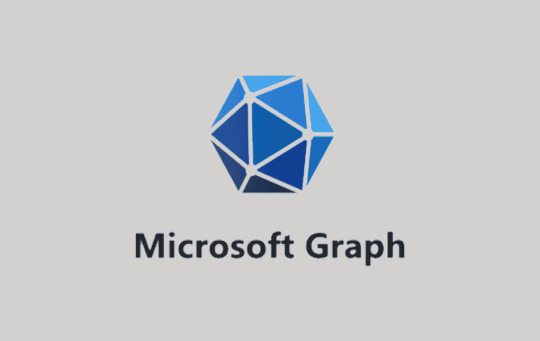
Comparing Invoke-RestMethod to the Microsoft Graph PowerShell SDK 👉 Read the article: https://bonguides.com/comparing-invoke-restmethod-to-the-microsoft-graph-powershell-sdk/?feed_id=375&_unique_id=66616190b0963
0 notes
Link
Jacob Roach / Digital Trends Microsoft has released Agility SDK 1.613.0, which features some critical components that will be presented to developers at the Game Developers Conference (GDC) in San Francisco next week. The most interesting elem... bitrise.co.in
0 notes
Text
Battle Royale: Comparing and Contrasting Hubs, Dashboards, and Platforms in Software
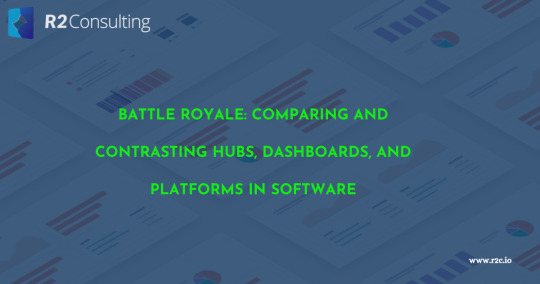
Table Of contents
Introduction
Hubs
Dashboards
Platforms
Comparing and Contrasting
Final Thoughts
Introduction
In the ever-evolving landscape of software development and data management, various components play pivotal roles in facilitating operations, enabling data-driven decision-making, and supporting application development. Three essential elements in this ecosystem are hubs, dashboards, and platforms. In this article, we’ll delve into the characteristics, purposes, and functionalities of each, highlighting the key differences and similarities among them.
Hubs
A software hub acts as a central point for data or information aggregation, routing, and distribution. It serves as an intermediary between different systems, applications, or devices, ensuring seamless communication and data exchange. Here’s a closer look at hubs:
Purpose:
Hubs primarily facilitate the exchange of data and information among disparate entities.
They streamline data flow, allowing efficient communication between connected components.
Hubs play a crucial role in orchestrating data integration processes.
Functionality:
Data routing and transformation: Hubs ensure data reaches the right destination in a compatible format.
Mediation: They mediate communication between various systems with different protocols.
Scalability: Hubs can scale to accommodate increasing data volumes and new connections.
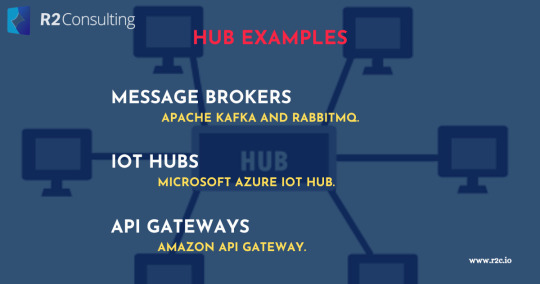
Message Brokers: Apache Kafka and RabbitMQ.
IoT Hubs: Microsoft Azure IoT Hub.
API Gateways: Amazon API Gateway.
Dashboards
Dashboards are user interfaces that provide visual representations of data, metrics, and insights. They offer a concise and comprehensible way to monitor, analyze, and interpret data. Key aspects of dashboards include:
Purpose:
Dashboards are designed to present data and key performance indicators (KPIs) in an easily understandable format.
They support real-time monitoring, historical analysis, and decision-making.
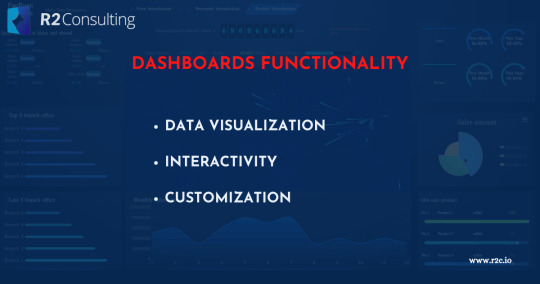
Data visualization: Dashboards employ charts, graphs, and tables to convey information.
Interactivity: Users can interact with dashboards, drilling down for more details or adjusting settings.
Customization: Dashboards can be tailored to display specific data relevant to users’ needs.
Examples:
Business Intelligence Tools: Tableau, Power BI, and QlikView.
Data Visualization Libraries: D3.js, Chart.js.
Project Management Dashboards: Trello boards, Asana.
Platforms
Software platforms provide comprehensive environments or infrastructures that support the development, deployment, and management of software applications. They serve as a foundation for building and running various software solutions. Key characteristics of platforms include:
Purpose:
Platforms offer a robust foundation for software development and deployment.
They provide a range of tools, services, and capabilities to support application lifecycle management.
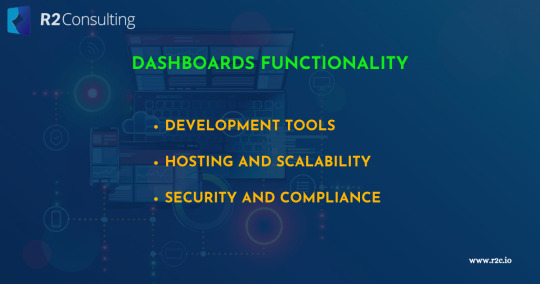
Development tools: Platforms offer integrated development environments (IDEs) and software development kits (SDKs).
Hosting and scalability: They provide hosting services, ensuring applications can scale as needed.
Security and compliance: Platforms often include security features and compliance standards.
Examples:
Cloud Computing Platforms: Amazon Web Services (AWS), Google Cloud Platform (GCP), Microsoft Azure.
Mobile App Development Platforms: Android Studio, Xcode.
Blockchain Platforms: Ethereum, Hyperledger Fabric.
Comparing and Contrasting
Now, let’s compare and contrast hubs, dashboards, and platforms:
Centralization:
Hubs centralize data and communication.
Dashboards centralize data visualization and presentation.
Platforms centralize development and infrastructure resources.
Purpose:
Hubs focus on data exchange and integration.
Dashboards concentrate on data visualization and analysis.
Platforms provide a foundation for software development and deployment.
Functionality:
Hubs route and transform data.
Dashboards visualize data.
Platforms offer development, hosting, and management capabilities.
Examples:
Hubs: Kafka (message broker), Azure IoT Hub (IoT hub).
Dashboards: Tableau (business intelligence), D3.js (data visualization).
Platforms: AWS (cloud computing), Android Studio (mobile app development).
Final Thoughts
Hubs, dashboards, and platforms are distinct components within the software ecosystem, each serving specific purposes and functions. While hubs enable data exchange, dashboards provide data visualization, and platforms offer comprehensive development environments. Understanding these differences is crucial when architecting software solutions, as they play complementary roles in building robust and efficient systems. Whether you’re streamlining data flow, visualizing business metrics, or developing innovative applications, these software components will remain indispensable in your toolkit.
0 notes
Text
How to use the Microsoft Graph SDK Chaos Handler to Simulate Graph API Errors
How to use the Microsoft Graph SDK Chaos Handler to Simulate Graph API Errors
So you’ve developed your application using the Microsoft Graph SDK, you are making calls to the Graph API and things are looking great. Being an awesome developer, you want to make sure that your application can handle any errors that the Graph API might throw at you. The first challenge is trying to figure out what errors could be returned. According to the Microsoft Graph API documentation,…

View On WordPress
1 note
·
View note
Text
GET Onedrive activity reports using microsoft graph sdk
GET Onedrive activity reports using microsoft graph sdk
My requirement is to get details about OneDrive activity by user using Microsoft Graph SDK. I set the Graph permission “Reports.Read.All” as per the documentation. Being said that in case if you’re using delegated permissions then it needs to allow apps to read service usage reports on behalf of a user, the tenant administrator must have assigned the user the appropriate Azure AD limited…
View On WordPress
#activity reports#Azure AD#csv#Graph SDK#Graph Service Client#Microsoft Graph#Microsoft Graph API#Microsoft Graph Explorer#Microsoft Graph SDK#OneDrive#permissions#POSTMAN#reports#roles
0 notes
Text
F# Weekly #6, 2023 – Exercism’s Functional February
Welcome to F# Weekly, A roundup of F# content from this past week: News Update to the .NET language strategy – .NET Blog (microsoft.com) Write simpler code with the new Microsoft Graph .NET SDK v5 The #12in23 Challenge (exercism.org) Approaches available for selected Functional February exercises – Programming / F# – Exercism @sergey_tihon Hi! At @exercism_io, it's Functional February,…
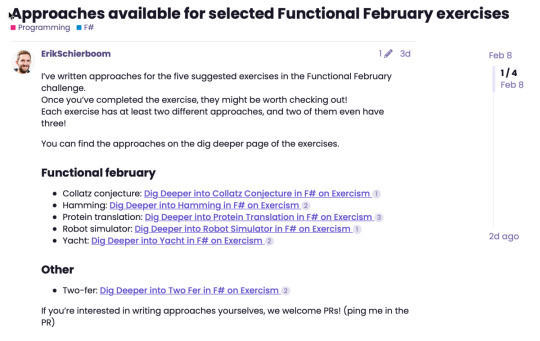
View On WordPress
0 notes
Text
Top 5 Artificial Intelligence Tools for Mobile App Development
TensorFlow Lite: An open-source machine learning framework designed for mobile and embedded devices.
TensorFlow Lite is an open-source, product ready, cross-platform deep learning framework that enables on-device machine learning. It allows developers to run their models on mobile, embedded, and IoT devices, allowing them to perform traditional machine learning tasks such as object detection and image classification. TensorFlow Lite also powers real-time computer vision with edge devices to solve real-world problems. TensorFlow Lite is a lightweight machine learning library that enables on-device machine learning. It has high performance with hardware acceleration and model optimization, and can perform almost any task a regular TensorFlow model can do, such as object detection, natural language processing, pattern recognition, etc. It also has features for making inference at the edge, such as being light-weight to accommodate limited resources in terms of storage and memory.
Core ML: Apple’s framework for integrating machine learning models into iOS and macOS apps.
Core ML is Apple’s machine learning framework that enables developers to integrate machine learning technology into their iOS apps. It is designed to take advantage of powerful hardware technology such as CPU, GPU, and Neural Engine in the most efficient way. Core ML supports Vision for analyzing images, Natural Language for processing text, Speech for converting audio to text, and Sound Analysis for identifying sounds in audio. It provides optimized performance with minimal memory and power consumption. Core ML is used across Apple products (macOS, iOS, watchOS, and tvOS) for performing fast prediction or classification tasks.
ML Kit: A Firebase mobile SDK that provides on-device machine learning APIs for iOS and Android.
ML Kit is a mobile SDK developed by Google that brings machine learning expertise to Android and iOS apps in an easy-to-use package. It offers a range of base APIs that cover common use cases such as text recognition, face detection, and barcode scanning. ML Kit also allows developers to deploy custom models for more specific use cases. It is available on devices running API level 14 and above. ML Kit is a mobile SDK developed by Google that offers a range of features such as text recognition, face detection, barcode scanning, image labeling, object detection & tracking, and landmark recognition.
Microsoft Cognitive Toolkit (CNTK): A deep learning toolkit for Windows and Linux that supports a variety of neural network architectures.
Microsoft Cognitive Toolkit (CNTK) is an open-source toolkit for commercial-grade distributed deep learning. It is a free, easy-to-use, open-source, commercial-grade toolkit that describes neural networks as a series of computational steps. CNTK was previously known as Computational Network Toolkit and is now deprecated. It enables users to easily realize and combine popular model types such as feed-forward DNNs, convolutional neural networks (CNNs) and recurrent neural networks (RNNs/LSTMs). CNTK implements stochastic gradient descent (SGD, error backpropagation) learning with automatic differentiation and parallelization across multiple GPUs and CPUs. It describes neural networks as a series of computational steps via a directed graph.
OpenCV
OpenCV (Open Source Computer Vision Library) is an open source library for computer vision, machine learning, and image processing. It is used to develop real-time computer vision applications and was originally developed by Intel.
OpenCV (Open Source Computer Vision Library) is an open source library with more than 2500 optimized algorithms, including a comprehensive set of both classic and state-of-the-art computer vision and machine learning algorithms. It is cross-platform and licensed as free and open-source, and has fast speed due to its original C/C++ implementation. It plays a major role in real-time operations today. OpenCV (Open Source Computer Vision Library) is used for a variety of applications, including real-time optimized computer vision, model execution for machine learning (ML), image processing, and more. It is open source and available on GitHub, allowing developers to access the source code and contribute to its development. It can also be integrated with other software libraries such as CDP Studio.
0 notes
Text
Azure developer tools services overview

Introduction
The current post attempts to present an overview of the Azure developer tools services, as of late June 2022. Azure Developer tools services allow administrators and developers to build, manage, and continuously deliver cloud applications using any platform, development runtime or language. Examples of containers services include Azure DevOps, Azure Pipelines, Visual Studio, Visual Studio Code, Azure DevTest Labs and Azure Lab Services. Given the dynamic nature of public clouds, this list will most likely change soon in the near future but nevertheless acts as a general point of reference when discussing Azure developer tools services. You find an overview of all Azure service categories at https://stefanos.cloud/blog/azure-service-categories/.
Developer tools services
Azure offers the following developer tools services to allow developers and devops engineers to perform a wide range of software development tasks. App Configuration Fast, scalable parameter storage for app configuration Azure DevOps Services for teams to share code, track work, and ship software Azure DevTest Labs Quickly create environments using reusable templates and artifacts Azure Lab Services Set up labs for classrooms, trials, development and testing, and other scenarios Azure Pipelines Continuously build, test, and deploy to any platform and cloud SDKs Get the SDKs and command-line tools you need Visual Studio Powerful and flexible environment to develop apps in the cloud Visual Studio Code A powerful, lightweight code editor for cloud development Azure Load Testing Preview Optimize app performance with high-scale load testing
Becoming Azure-certified developer and devops engineer
As per the Microsoft official certification poster (https://aka.ms/TrainCertPoster), there are four available certifications in the fields of Azure developer tools services. - Microsoft Certified: Azure Developer Associate (AZ-204). Candidates for the Azure Developer Associate certification are cloud developers who participate in all phases of development from requirements definition and design to development, deployment, and maintenance. They partner with cloud DBAs, cloud administrators, and clients to implement solutions. Candidates should be proficient in Azure SDKs, data storage options, data connections, APIs, app authentication and authorization, compute, and container deployment, debugging, performance tuning, and monitoring. - Microsoft Azure IoT developer (AZ-220). Candidates for this exam should have a general understanding of device types and Azure services, including data storage options, data analysis, data processing, AI, and other platform as a service (PaaS) options. They must be able to program in at least one Azure IoT software development kit–supported (SDK–supported) language. - Microsoft 365 Certified: Developer Associate. Microsoft 365 developers are proficient in Microsoft identity, Microsoft Graph, and building apps for Microsoft Teams. They have general knowledge on UI elements (including Fluent UI (Office UI Fabric), integration points (including Office Add-ins, SharePoint Framework, Actionable Messages), and determining workload platform targets. - Microsoft Certified: DevOps Engineer Expert (AZ-400). Responsibilities for this role include designing and implementing strategies for collaboration, code, infrastructure, source control, security, compliance, continuous integration, testing, delivery, monitoring, and feedback. The foundational certification which covers all basic aspects of software development is related to the 98-361 exam (https://docs.microsoft.com/en-us/learn/certifications/exams/98-361), which however will soon be retired in 2022. A foundational baseline on software development can be found at: https://docs.microsoft.com/en-us/shows/software-development-fundamentals/.
References
https://azure.microsoft.com/en-us/services/ https://azure.microsoft.com/en-us/product-categories/developer-tools/ Read the full article
0 notes
Text
Get the Last Password Change Date Using PowerShell in Microsoft 365
Table of Contents One of the key components of security is managing passwords. Password management is a critical aspect of maintaining security in the digital realm. In this comprehensive guide, we will discuss various methods for checking the last password change date in Microsoft 365.There are three methods for checking the last password change date in Microsoft 365: Using the Entra admin centerUsing Microsoft Graph PowerShell SDKUsing Microsoft Graph API Using the Entra admin center 1. Visit the Entra admin center then login using an administrative account.2. Navigate to Users | All users | Manage view | Edit columns. 3. Select the option Last password change date time from the list. Now the last password change date time is shown. Using the Microsoft Graph PowerShell SDK The second way is using Microsoft Graph PowerShell SDK. This method requires you to install some PowerShell modules on your machine. But, if you're familiar with the other Microsoft modules such as MSOL, ExchangeOnlineManagement, AzureAD...this is a good option.1. Install the required Microsoft Graph PowerShell SDK module by opening PowerShell as administrator then run the following command: Install-Module -Name Microsoft.Graph.Users -Scope CurrentUser 2. Getting the user’s information requires a certain level of permissions to be granted to the Microsoft Graph Command Line Tools application. So, in this case, we need to connect to Graph PowerShell with the following scopes: Connect-MgGraph -Scopes "User.Read.All" To get the last password change date for a particular user, use this Microsoft Graph PowerShell script: # Get the user information $properties = @('DisplayName','UserPrincipalName','AccountEnabled','lastPasswordChangeDateTime') $userId = '[email protected]' $result = Get-MgUser -UserId $userId -Property $properties # Get the user's last password change date and time $result | Select-Object $properties Similarly, to get the last password change date timestamp of all users, use the following PowerShell script: $properties = @('DisplayName','UserPrincipalName','AccountEnabled','lastPasswordChangeDateTime') Get-MgUser -All -Property $properties | Select-Object $properties This information can be very helpful for administrators who need to monitor user accounts and ensure their passwords are secure. To export the last password change date for all users to a CSV file, here is the PowerShell script: # Set the properties to retrieve $properties = @( "id", "displayName", "userprincipalname", "lastPasswordChangeDateTime", "mail", "jobtitle", "department" ) # Retrieve the password change date timestamp of all users $result = Get-MgUser -All -Property $Properties | Select-Object $properties $result | Format-Table # Export to CSV # $result | Export-Csv -Path "C:TempPasswordChangeTimeStamp.csv" -NoTypeInformation Using Microsoft Graph REST API Alternatively, we can use the Microsoft Graph Rest API to export the last time password change of all users in a Microsoft 365 tenant. When using this method:We don't need to install any modules of the Microsoft Graph PowerShell SDK (~ 80 modules).We can do it from any computer with Microsoft PowerShell or PowerShell Core installed (Linux and macOS are supported with PowerShell 7+ installed).Use the native PowerShell cmdlet Invoke-RestMethod to make a request.Instead of using an account for authentication and authorization, we use the app-only access (access without a user).Important: Before you begin, make sure you've created an app registration in Microsoft entra admin center and collect some required information such as clientId, tenantId and the clientSecret.Once the app has been created, replace your app's information (clientId, tenantId and the clientSecret) into the below code. Steps in the script:Get access token ($token) with app registration client secret.Create the request header ($headers) for API call.Create requests to the Microsoft Graph resource ($userEndpoint) with pagination to get all data.Build the report ($result) from API call response.Output options to console, graphical grid view or export to CSV file. # Define variables $clientId = "xxxxxxxxxxxxxxxxxxxx" $clientSecret = "xxxxxxxxxxxxxxxxxxxx" $tenantId = "xxxxxxxxxxxxxxxxxxxx" # Get OAuth token $tokenEndpoint = "https://login.microsoftonline.com/$tenantId/oauth2/v2.0/token" $body = @ client_id = $clientId client_secret = $clientSecret grant_type = "client_credentials" scope = "https://graph.microsoft.com/.default" $response = Invoke-RestMethod -Method Post -Uri $tokenEndpoint -Body $body # Extract access token $accessToken = $response.access_token # Create the request header for API call $headers = @ "Authorization" = "Bearer $accessToken" "Content-Type" = "application/json" $userEndpoint = "https://graph.microsoft.com/v1.0/users?`$select=DisplayName,UserPrincipalName,AccountEnabled,lastPasswordChangeDateTime&`$top=100" #Perform pagination if next page link (odata.nextlink) returned $result = @() while ($null -ne $userEndpoint) $response = Invoke-RestMethod -Method GET -Uri $userEndpoint -Headers $headers $users = $response.value ForEach($user in $users) $Result += New-Object PSObject -property $([ordered]@ DisplayName = $user.displayName UserPrincipalName = $user.userPrincipalName AccountEnabled = $user.AccountEnabled lastPasswordChangeDateTime = $user.lastPasswordChangeDateTime ) $userEndpoint = $response.'@odata.nextlink' # Output options to console, graphical grid view or export to CSV file. $result | Format-Table # $result | Out-GridView # $result | Export-CSV "C:Result.csv" -NoTypeInformation -Encoding UTF8
0 notes
Text
Microsoft visual studio 2013 free download 無料ダウンロード.Visual Studio 2013
Microsoft visual studio 2013 free download 無料ダウンロード.最新の Visual Studio はお試しになりましたか?

Surface デバイス.Visual Studio Tools のダウンロード - Windows、Mac、Linux 用の無料インストール
Visual Studio IDE または VS Code を無料でダウンロードします。 Windows、Mac で Visual Studio Professional または Enterprise エディションをお試しください。 Dec 30, · Visual C++ 再頒布可能パッケージは、Visual Studio を使用してビルドされる C++ アプリケーションを実行するために必要なランタイム コンポーネントをインストールします。これらの再頒布可能パッケージの更新版については、サポート情報 をご参照く こんにちは。 Visual Studio 無償評価版 は、現在はどこからダウンロードすればよいのでしょうか。 Visual Studio Professional with Update 5 がありますが、試用版との表示や試用期間の表示などはないようです。. 試用期間はどのようでしょうか。
Microsoft visual studio 2013 free download 無料ダウンロード.Visual Studio 無償評価版をダウンロードする場所について
Visual Studio Dev Essentials – 上記のすべてと、追加の特典 これらすべての無料のツールとサービスに加えて、Pluralsight トレーニング、Azure クレジット、ダウンロード、その他を無料で Visual Studio Language Pack. Visual Studio Test Professional Language Pack. Visual Studio Team Foundation Server Visual Studio Team Foundation Server Express Team Explorer for Visual Studio Visual Studio SDK. Visual Studio Modeling SDK. Visual Studio Agents. Visual Studio Express for Web. Visual こんにちは。 Visual Studio 無償評価版 は、現在はどこからダウンロードすればよいのでしょうか。 Visual Studio Professional with Update 5 がありますが、試用版との表示や試用期間の表示などはないようです。. 試用期間はどのようでしょうか。
Visual Studio Professional with Update 5 がありますが、試用版との表示や試用期間の表示などはないようです。. 方法: 評価版の Visual Studio からアップグレードする. 無償となっているのは Express と Community のみとなっていて、それ以外のものは90日間の試用期間以内にライセンスを取得する必要があったかと思います。また、私の認識では、ダウンロードできるイメージは製品版と同じもだったと思います。.
デベロッパー センター. 機能とソリューション Office の優れた点 Office UI Fabric Microsoft Graph Better with Office Word Excel Powerpoint Access Project OneDrive OneNote Outlook SharePoint Skype Yammer. Android ASP.
NET iOS JavaScript Node. js PHP coming soon Python coming soon Ruby coming soon. Office アドイン Office アドインの可用性 Office アドインの変更ログ Microsoft Graph API Office コネクタ Office REST API SharePoint アドイン Office UI Fabric Office ストアに提出する すべてのドキュメント. クイック アクセス. Remove From My Forums. Visual Studio Development. Visual Studio 共通 フォーラム. nishimori 0. こんにちは。 Visual Studio 無償評価版 は、現在はどこからダウンロードすればよいのでしょうか。 Visual Studio Professional with Update 5 がありますが、試用版との表示や試用期間の表示などはないようです。 試用期間はどのようでしょうか。 よろしくお願い致します。.
aspx 上記のページの下の方に「Visual Studio 」とありますので、そこをクリックすると無償評価版をダウンロードすることができます。 また、「Visual Studio Professional with Update 5」の試用期間は 90 日となっております。 個人でのご使用でしたら、Visual Studio Communityがお勧めです。. 編集済み kenjinote MVP 年4月13日 回答の候補に設定 星 睦美 年4月15日 回答としてマーク 星 睦美 年4月21日 製品版と同様だったと思います。 製品版へのアップグレード時に再インストール等は不要です。 評価期間とアップグレードについては以下を参照されると良いかと思います。 方法: 評価版の Visual Studio からアップグレードする. 回答の候補に設定 星 睦美 年4月15日 回答としてマーク 星 睦美 年4月21日 返信有難うございます。 ダウンロードしてみます。 私はのライセンスで止まっていて、ちょっとだけ他者の開発アプリを確認したい事項が出てきたので、まずは試用版と思った次第です。結局、購入する事になるのかもしれませんが・・・ 今回は仕事関係ですが、個人ならVisual Studio Community ですね。 ところで、少しそれますが、ご案内頂いた場所からダウンロードできるものは全部無償版なのでしょうか。それとも製品(ダウンロード版)との区別はなくて必要なときにライセンスを取得する形になっているのでしょうか。 よろしくお願い致します。.
ご案内頂いた場所からダウンロードできるものは全部無償版なのでしょうか。それとも製品(ダウンロード版)との区別はなくて必要なときにライセンスを取得する形になっているのでしょうか。 無償となっているのは Express と Community のみとなっていて、それ以外のものは90日間の試用期間以内にライセンスを取得する必要があったかと思います。また、私の認識では、ダウンロードできるイメージは製品版と同じもだったと思います。 ライセンスの詳細につきましてはマイクロソフトにご確認いただいたほうが確実かと思います。 よろしくお願いいたします。. 編集済み kenjinote MVP 年4月13日 返信で頂いたwebページから、インストールしました。ISOファイルからインストールしようと思いましたがDVDに入りきらないためwebインストーラーで行いましたが問題なくできました。私の環境では1時間半弱かかりました。 皆様 有難うございました。.
コミュニティ リソース. 使用条件 商標 プライバシーに関する声明.
0 notes
Text
Machine Learning: PyTorch 1.10 bringt CUDA Graph APIs und neues SDK TorchX
Die ML-Bibliothek PyTorch hat in Version 1.10 Breaking Changes im Gepäck. Gleichzeitig veröffentlichte Microsoft die erste Preview für PyTorch-DirectML. Read more www.heise.de/news/…... www.digital-dynasty.net/de/blogs-2/238-teamblogs/…

http://www.digital-dynasty.net/de/blogs-2/238-teamblogs/36131-machine-learning-pytorch-1-10-bringt-cuda-graph-apis-und-neues-sdk-torchx.html
0 notes
Text
[Generally Available] Microsoft Graph Go SDK
Are you a Go Programmer? Then this is for you. We have the Microsoft Graph Go SDK, is a client library that lets you connect and retrieve data from any of the supported Microsoft services that are available on Microsoft Graph API and provide to users many features that will increase resiliency, better performance, ease authentication and more. The client library is generated using Kiota, a new…
View On WordPress
#Azure Active Directory#Developer#development#Feedback#GA#General Availability#Github#GO#Kiota#Microsoft Graph GO SDK#Microsoft Q&A#MSAL#SDK
0 notes
Text
F# Weekly #32, 2021 - Finelines & Ionide Tests Runner
F# Weekly #32, 2021 – Finelines & Ionide Tests Runner
Welcome to F# Weekly, A roundup of F# content from this past week: News Load Only the Projects You Need with Solution Filters | Visual Studio Blog (microsoft.com)Microsoft Graph .NET SDK v4 now generally available with streamlined authentication and moreAnnouncing Code of Conduct Enforcement ServicesThe Elmish Book – Audience OverviewWhat’s new in ReSharper 2021.2 – F# SupportCoreWCF 0.2.0…

View On WordPress
0 notes